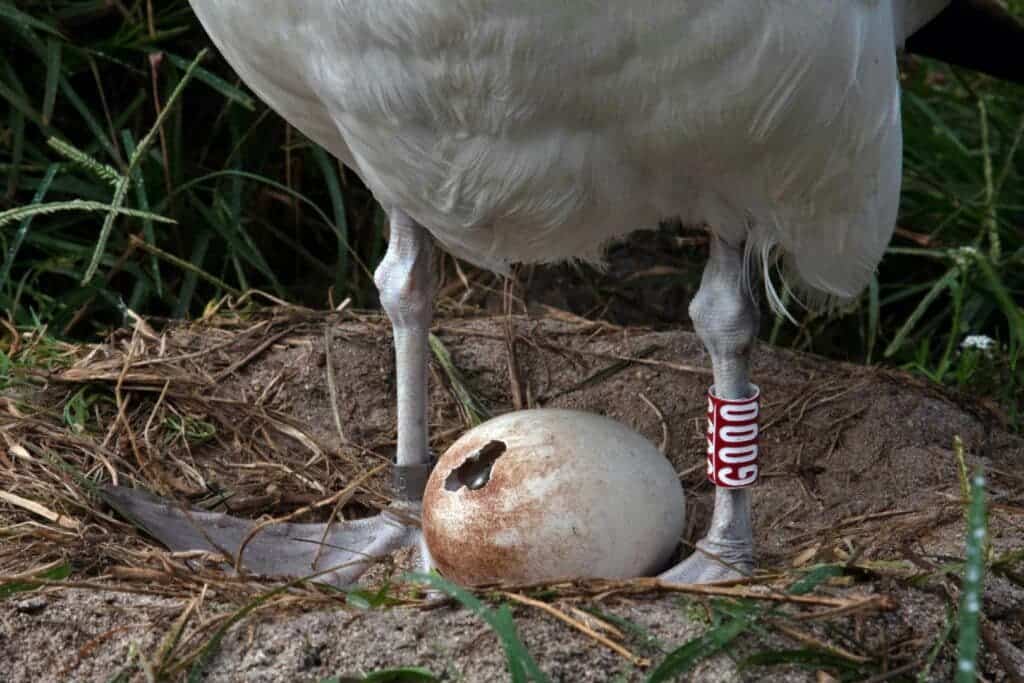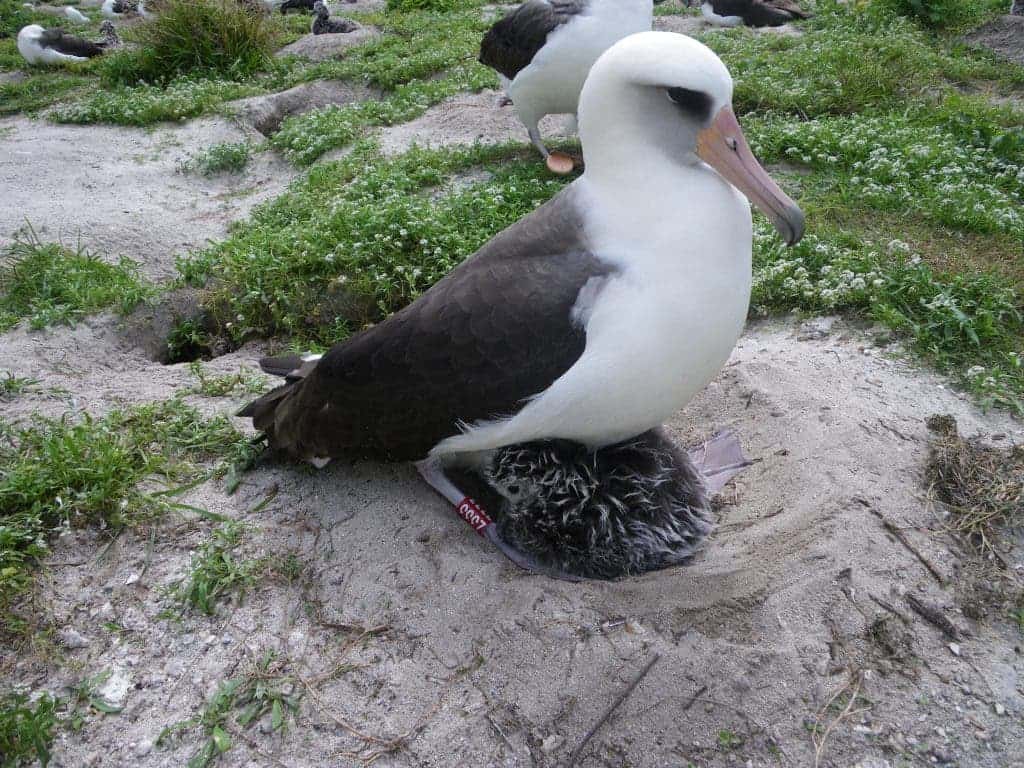Wisdom, the Laysan albatross regarded as the oldest known wild bird in history, has hatched yet another chick at Midway Atoll in the Hawaiian archipelago. Biologists first identified and banded Wisdom in 1956, when she was already a few years old. Now, she’s at least 70 years old, having hatched more than 30 chicks over her lifetime with different partners.

The new chick hatched on February 1st in the Midway Atoll national wildlife refuge, where more than a million albatrosses return to nest each year. Akeakamai, Wisdom’s long-term partner, fathered the chick, according to the US Fish & Wildlife Service (USFWS). They have been hatching and raising chicks together at least since 2012.
“Because she only nests every two years, the international bird community looks forward to seeing if she’s been able to come back and nest. The odds are stacked against them so much, whenever it happens it’s always a cause for celebration,” Sean Dooley, national public affairs manager for BirdLife Australia, told NPR – excited about the new development.
Wisdom was first tagged in 1956 and estimated to be at least 6 years old then. However, it is possible that Wisdom is even older than we think because the taggers made a conservative estimate. She’s beating the typical lifespan of her species, which is 50, by a mile. It’s possible that there are other birds out there even older than Wisdom but they haven’t been tagged.
The person who attached the tag to Wisdom has since retired, but the albatross continues to live a normal lifestyle, the years passing without leaving a mark on her. She has laid over 30 eggs, which is an amazing figure. Albatrosses normally lay one egg per year and have monogamous mates for life, but Wisdom is not a normal albatross. In fact, she has had several mates and seems to be living the life.

Beginning in October, birds return to their same nesting site at the Midway Atoll and reunite with their mate in the world’s largest colony of albatrosses. This is also the case of Wisdom and her mate Akeakmai. Wisdom laid her egg sometime in November and then returned to sea to forage – with Akeakamai taking over the incubation duties.
Albatrosses don’t typically lay eggs every year — and when they do, they lay only one egg. Once the chick hatches, the parents share incubation and feeding duties. They feed the chick a diet rich in fish eggs and squid, regurgitating the food they forage while at sea. After being fed for a few months, chicks fly for the first time in the months of June and July.
The two flat islands at the Midway Atoll act as giant landing strips for albatrosses and millions of other seabirds, which rely on it to raise their young. The USFWS, which manages the conservation site, estimates 70% of the world’s Laysan and almost 40% of the black-footed albatross, as well as the endangered short-tailed albatross all rely on Midway Atoll.
“Each year that Wisdom returns, we learn more about how long seabirds can live and raise chicks,” Beth Flint, a biologist, and researcher at USFWS, said in a statement. “Her return not only inspires bird lovers everywhere but helps us better understand how we can protect these graceful seabirds and the habitat they need to survive into the future.”
Over the years, Wisdom has also become a symbol for the threat that many seafaring birds face. Laysan albatross have been identified as “near-threatened” by the International Union for Conservation, while several other other albatross species are considered critically vulnerable or endangered.



